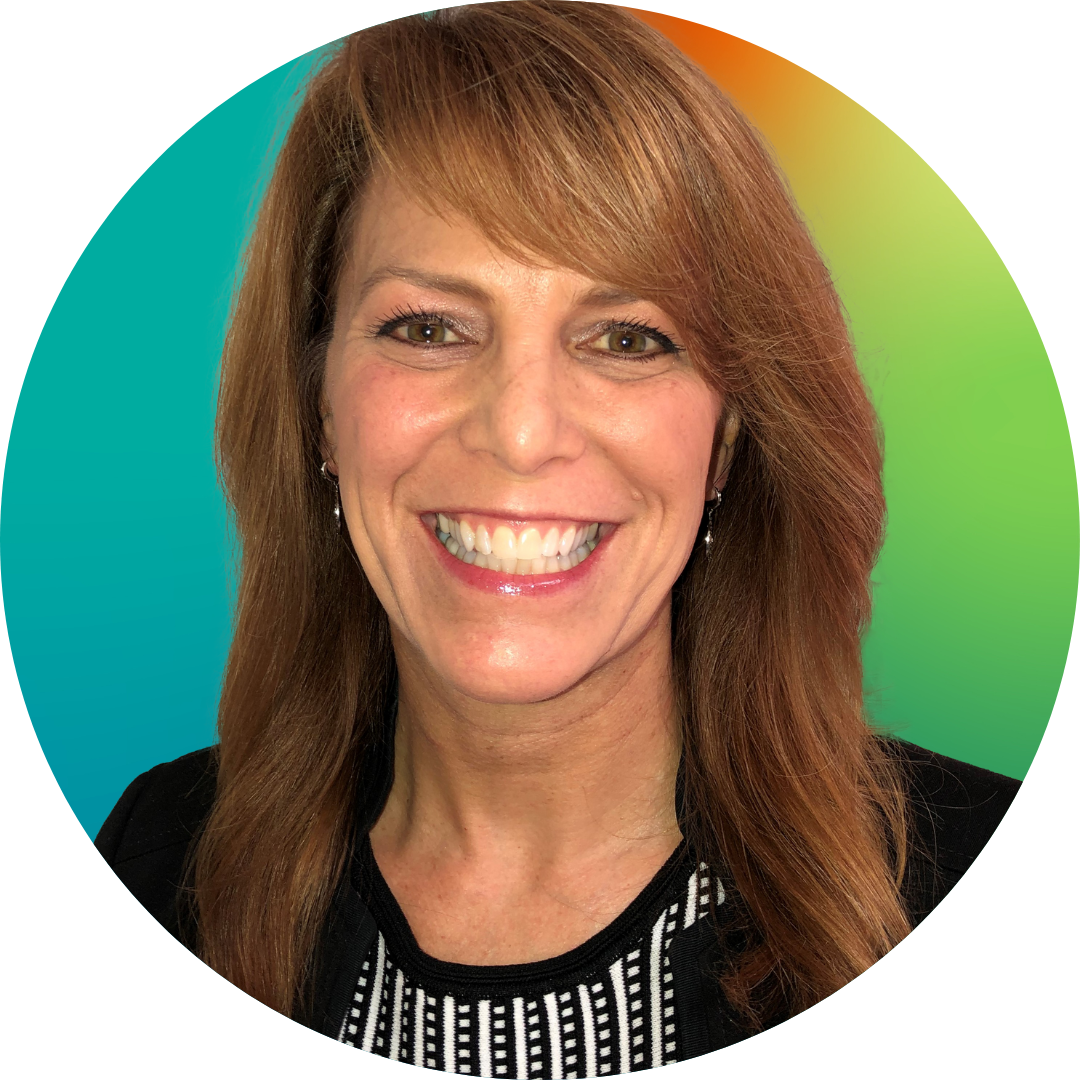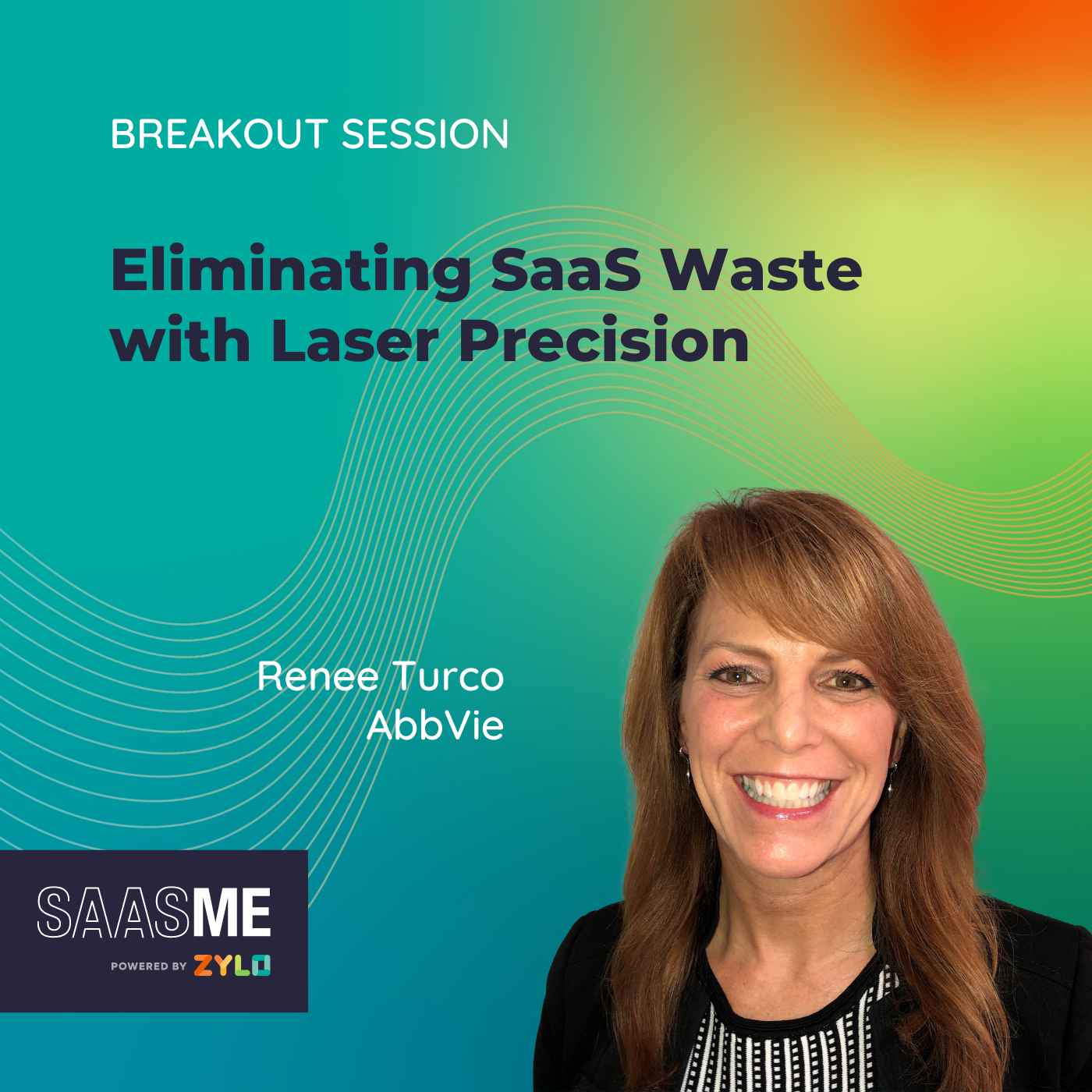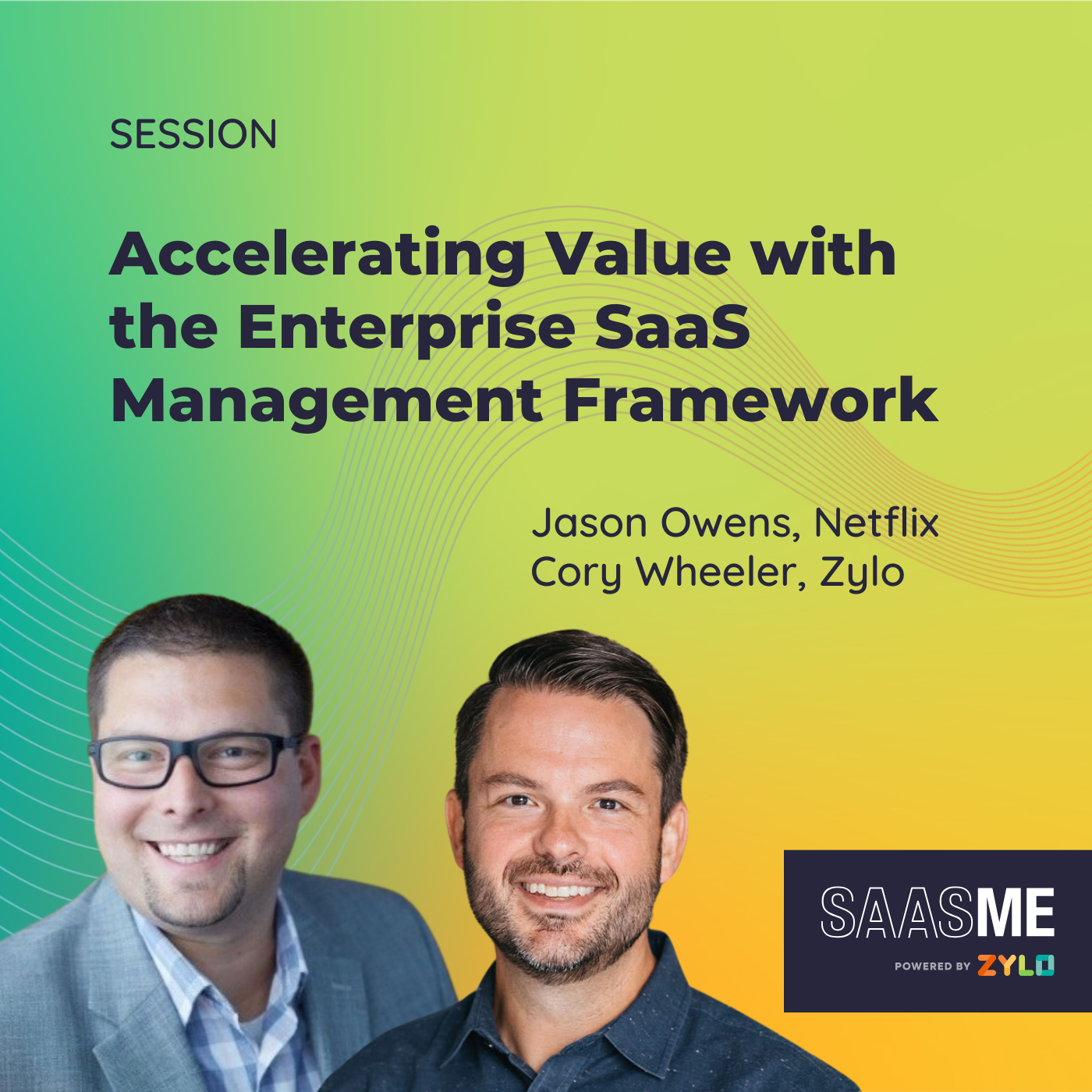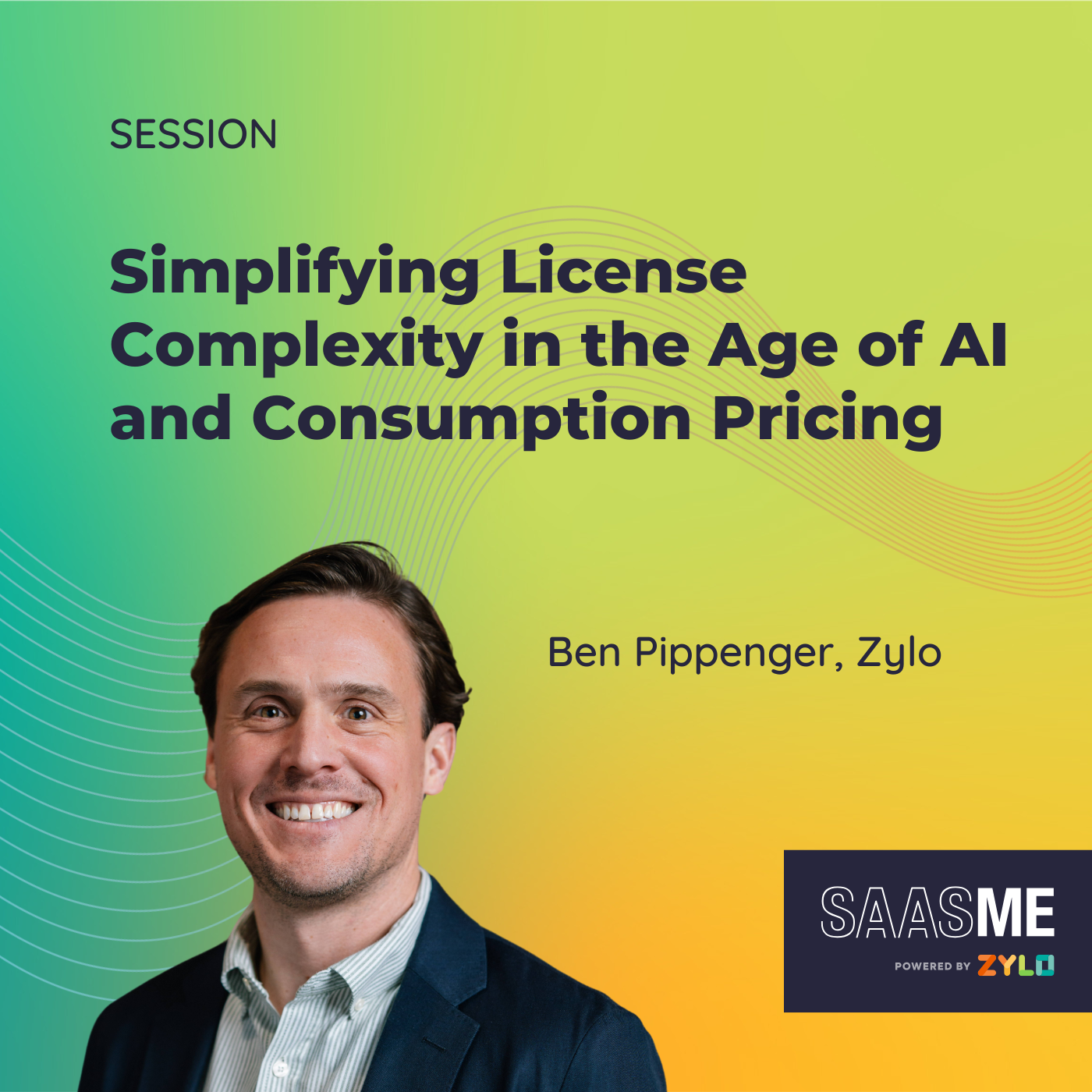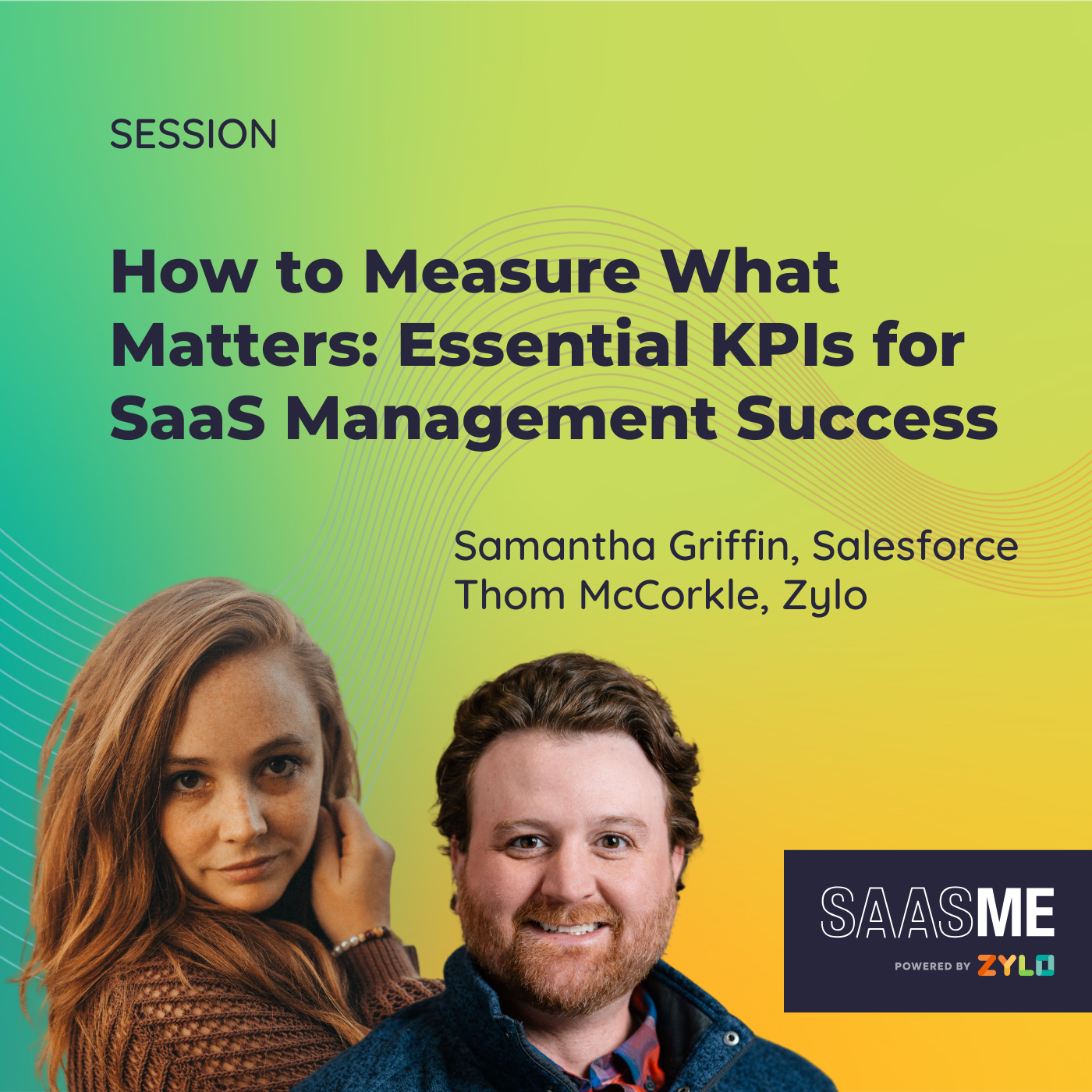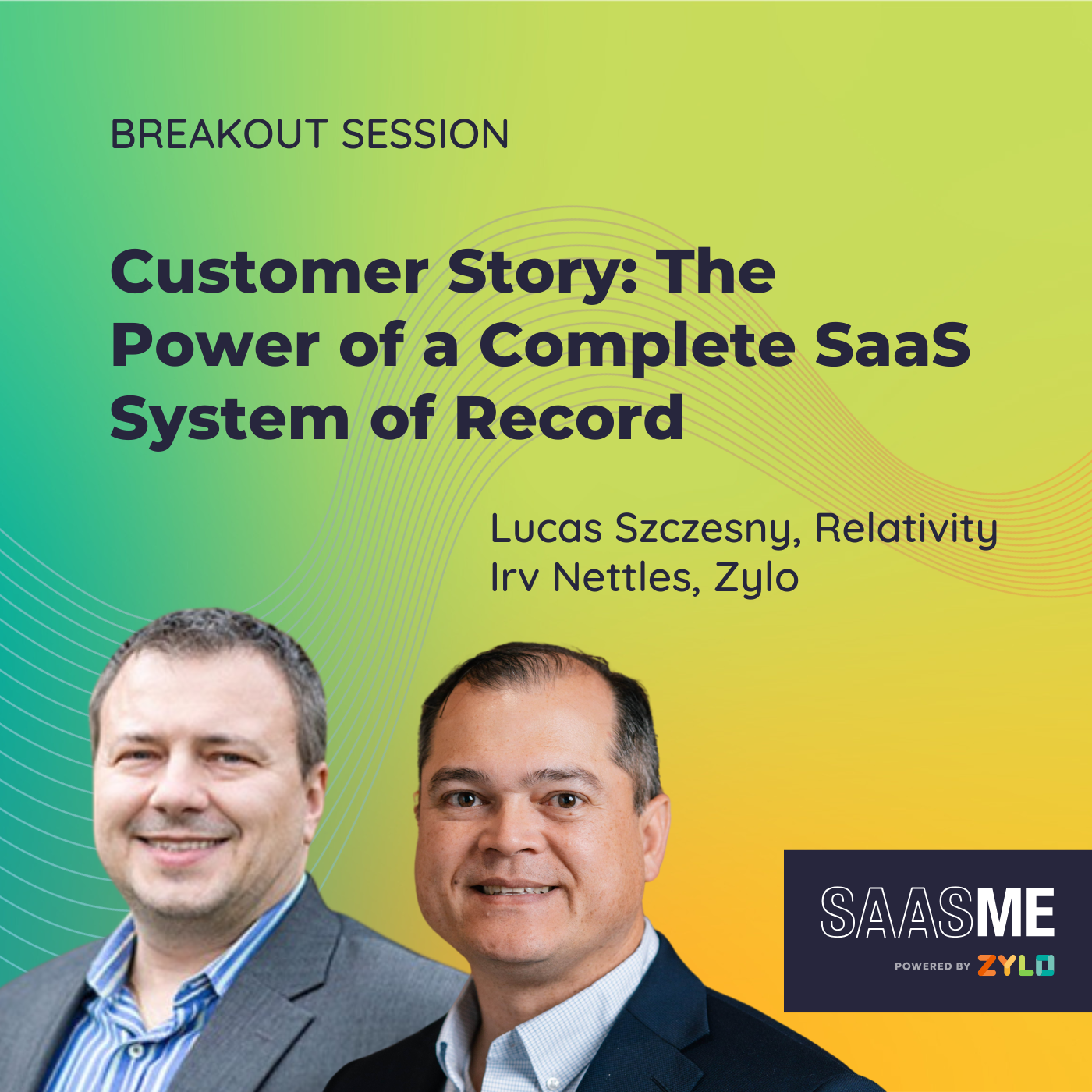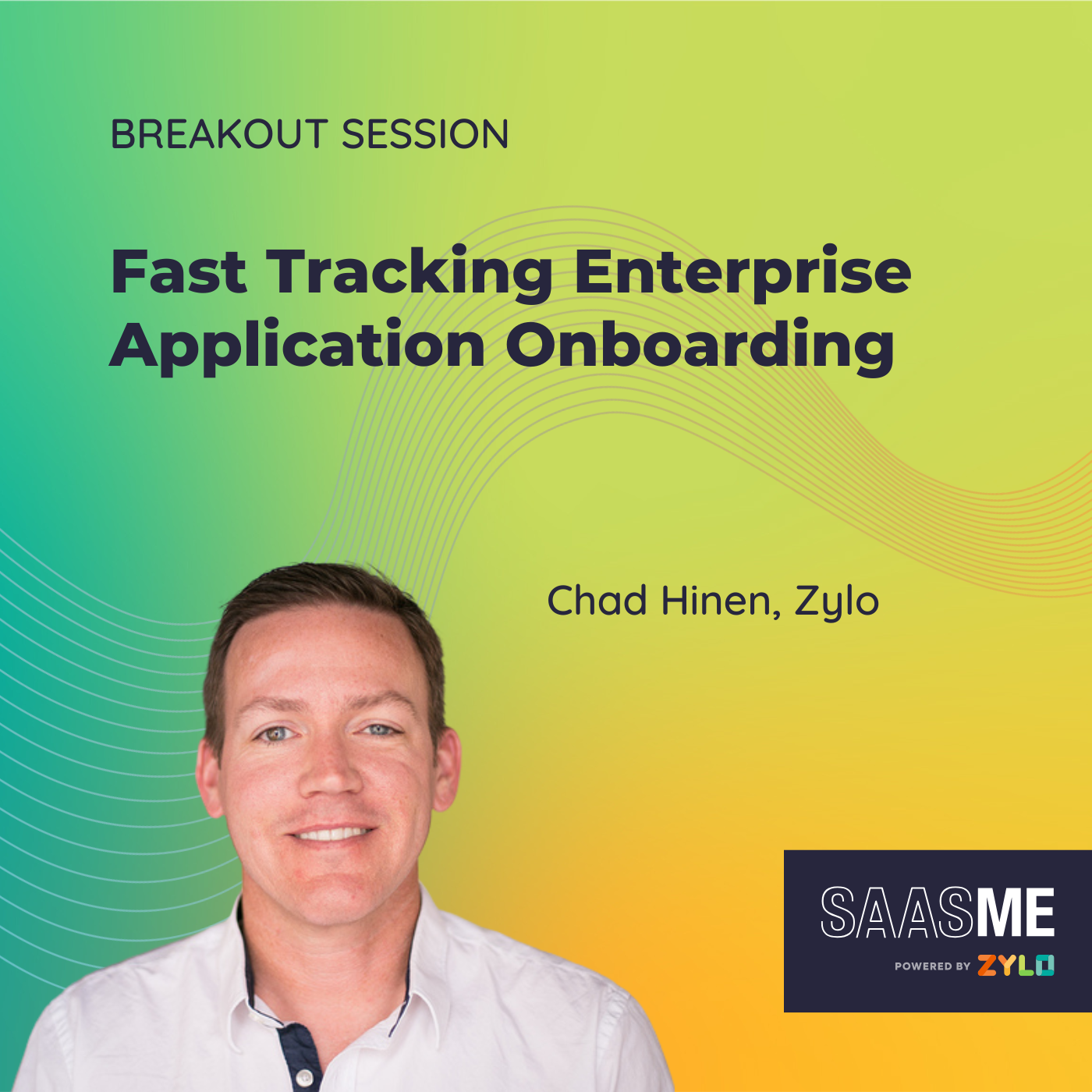Eliminating SaaS Waste with Laser Precision
- 0.5
- 1
- 1.25
- 1.5
- 1.75
- 2
Renee Turco: Thank you Casey, and welcome everybody. I wanted to share with you how we at AbbVie have used Zylo as a great tool in eliminating our SaaS waste through laser precision. I'm Renee Turco. I'm with AbbVie. I'm a Senior Manager in our Technology Asset Management area.
Renee Turco: What we're going to talk about today is I want to set the stage for you about the environment at AbbVie, what are we managing and the size and scope of the applications in our SaaS and subscription space. Then I'll talk a little bit about the approach that we have used to eliminate waste, the results that we've obtained through 2022 and key takeaways that we've learned.
Renee Turco: So first at AbbVie, we have approximately 1,500 SaaS applications in our portfolio and in the grand scheme, I just want to put that into a little context for you, we have about 4,000 applications in total. However, we have $400 million in software spend. In SaaS and subscription span, subscriptions comprise half of that spend. So in terms of the number of applications, while it's much lower than our on- premise number, the spend is still significant, which is why it's so important that we're managing SaaS and subscription-based applications very precisely.
Renee Turco: We do that by looking at four different areas of spend in use. We monitor and address Shadow IT. We look for purchasing efficiencies. Thirdly, we're looking at applications that have similar functions, also known as application rationalization so that we can reduce redundant software. And then lastly, we optimize licenses based on usage and we do that proactively through our renewal program.
Renee Turco: So a little bit more detail into the approach that we have been using to eliminate waste. Shadow IT. So the key focus for us in 2022 was to address all software that was being expensed on corporate credit cards. That introduced a lot of risk and a lot of opportunities for several reasons. A lot of folks didn't understand that there were already agreements in place for some of the software that they were purchasing on P-Cards, and they weren't leveraging the pricing that AbbVie had already pre-negotiated. So there were some instances where people were overbuying or paying way too much for applications that we already had agreements for. And speaking of the agreements, oftentimes when folks were purchasing software on their corporate credit card, it was via clickthrough agreements. Those clickthrough agreements often include terms and conditions that aren't favorable to your organization, and we did find several cases of that as we dug deeper into the expense spend that was occurring in our environment.
Renee Turco: Good example of that was SurveyMonkey. Just in the year 2022, we had over 408 separate transactions that were valued at over$165, 000. As I noted, there were pricing variations for the exact same software that was purchased via the credit card. We notified and educated these users. We have an enterprise agreement in place. This is the advantage to that, and we consolidated all of that usage into an enterprise agreement.
Renee Turco: Second area that we focus on is purchasing inefficiencies. We have a lot of separate transactions that were being done to purchase the same software from the same publisher, but in numerous transactions. So we took a look at the opportunities to consolidate those agreements. So rather than having, say, 10 plus individual transactions at different times of the year, they were consolidated, co- termed. And we also worked with several of our publishers to block credit card expenses. And we were able to achieve that, which also prevented employees who just may not be in the know. They're not doing it maliciously, but it is against our corporate policy. The other advantage to that is there can be hidden costs beyond just optimizing the license usage.
Renee Turco: For example, 10 plus individual purchase orders issued for the same product, same publishers. Here at AbbVie, we use a rough number of$ 100 per purchase order. So you multiply that and it adds up as just waste.
Renee Turco: The third bucket that we look at is reducing our functional overlap. Here, we call it application rationalization. So Zylo categorizes the applications into various capabilities, and Zylo is our starting point to look at those overlaps. We then work with our architecture team and with the business owners to vet the functionality and use of each of those applications to determine, is there an opportunity to reduce the number of applications that are being used that provide the same functionality?
Renee Turco: We've had a couple of examples. In project management space, we use several tools. But once you start vetting that more closely with your business application owners, you may find there is a very legitimate reason for each of these individual applications to exist. However, you might find there is an opportunity to have teams migrate to something that's more standard, maybe even less expensive. But I will say of the three areas we focus on, this one is the most challenging. You're going to see your business application owners look at their application, as we're often told, " It's our application." It's really not. It's your enterprise, it's your business, and we shall be good stewards of the companies we work for. So it is a bit of a challenge. But we do cancel applications that are deemed redundant and we set those standards and there's more policy and education that's going out to our user community so they can appreciate the reasons why we're doing this from a business technology and systems perspective.
Renee Turco: An example that we were able to achieve just recently is SurveyMonkey. SurveyMonkey, we got to a point towards the middle of the year where we did consolidate and we got to an enterprise agreement, but we're also a very heavy Microsoft shop. And Microsoft Forms, we discovered was fitting for more than 90% of the use that SurveyMonkey had been used for previously. So we've migrated users away from SurveyMonkey and onto Microsoft Forms at no additional cost to the company. And quite honestly, we had $165,000 of spend, just an expense that was shifted. So it's over a $200,000 elimination as a result to moving to Microsoft Forms.
Renee Turco: The fourth bucket that we look at for optimization opportunities is license usage. Our goal is to reduce any shelfware and address new demand. What I mean by that is a lot of your SaaS subscriptions, almost all, based on the quantity, you're paying upfront. It's kind of a use it or lose it. Well, if you find that you're using far less than what was purchased, it is certainly an opportunity to reduce that spend. And we here at AbbVie, we start at the 50% threshold as a starting point.
Renee Turco: And I will say it's a starting point. And the reason for that is not all applications, your entitlements are not based on user usage. Many are, but don't use that as your only viewpoint for saying, "Hey, I have some licensing optimization opportunities here." What we ran into is several of the applications on the surface look like they were only being used about 20% of the quantity purchased. Well, that's because the entitlement was based on the total number of employees at AbbVie, not on the number of users utilizing the application.
Renee Turco: We also had examples where the entitlements were based on the number of devices in the environment, again, not on the usage of the application. So my caution is it's a great starting point, provides a lot of insights, but make sure that you understand exactly what your entitlements are.
Renee Turco: Where we've had a tremendous success with this is Salesforce, where it is truly based on the usage. Salesforce is very complex. We have over 38 separate instances in our environment, but we have in our agreements the ability to shuffle those licenses amongst instances where applicable. So when new demand comes in, we're constantly looking at which areas may have licenses available for use. And through that shuffling last year in 2022, we were able to achieve a $2.2 million cost avoidance by reclaiming and reassigning these licenses.
Renee Turco: And I will say it's been so welcomed by our business application owners because we are able to show them exactly the data that supports the usage of these applications. So they can say, "Hey, indeed, we can work together to optimize the licensing, reduce the risk to the company, and reduce the overall cost."
Renee Turco: So what were our key results for 2022? We achieved central visibility into our purchases, our contract information, and utilization data. By utilizing Zylo and the concierge services, this greatly improved our ability to take this information back to business owners and provide them the same information and provide them with recommendations, which was absolutely key to them being able to make better business decisions.
Renee Turco: We reduced our expense spend by 47%. A lot of folks, they weren't doing the expense spending maliciously, some just didn't know better, didn't know where to go for centralized purchasing of software. We've educated our user community and by doing that, we've reduced that expense spend significantly.
Renee Turco: We also canceled over 60 subscriptions through that process. And why that was key is a lot of those subscriptions were through clickthrough agreements, again, that were not favorable terms to AbbVie. We migrated those users either to standard applications or to agreements that already existed on AbbVie's behalf.
Renee Turco: I'd say our greatest achievement was Zoom. In March, 2023, we had a renewal from our previous three-year agreement that the company went into right as the pandemic started. Zoom was negotiated as our collaboration tool so folks could get to their remote locations very quickly, still collaborate, still be productive. Over the past three years, that utilization of Zoom has dropped significantly. And through that usage data in Zylo, we were able to provide that information to our application owners, and the business made the decision to reduce the 30,000 users subscription down to 7,000 users. That resulted in a $1.2 million reduction on an annual basis at no additional cost to us because we are a heavy Microsoft shop and Teams, as most people know, comes as your standard.
Renee Turco: So the key takeaways that we've learned thus far is that by gaining complete visibility into your spend, contract terms, usage, all those mission- critical items are successful to your SaaS program. It does require governance and constant collaboration with your application owners, but being able to provide them visibility and key insights into potential opportunities is where we've really started a better partnership and are growing that partnership with all areas of the company. We're using that data to make better business decisions on either optimizing opportunities or reducing risk. And that's always a key factor. That's kind of what we always say, " That's why our team exists. Reduced risk, reduce cost." We constantly are talking with our business owners and engaging the right teams at the right times, which is also a key component as this takeaway. The more proactive you can be in working with your business owners so that they can vet this, they can bring in purchasing, who's negotiating legal even from your contract terms and conditions, just constantly evolves this process and helps us optimize on a higher level. And as I said, instituting a governance program is key because it's one thing to bring these insights, but it's also another to execute upon them and to hold teams accountable for execution and for the decisioning. And with that, I thank you.
DESCRIPTION
Unused software is the number one source of waste in your portfolio. In fact, the average organization is only utilizing 56% of their SaaS licenses. In this session, you’ll learn how to identify unused SaaS licenses and take the proper optimization actions to eliminate waste and maximize adoption.
Today's Guests
